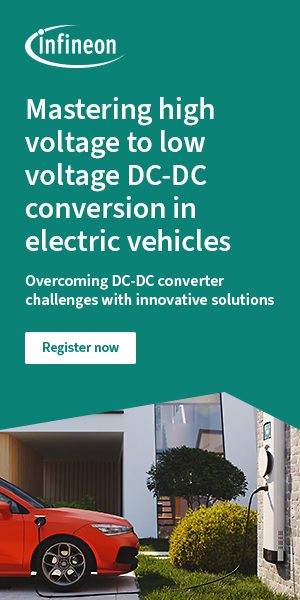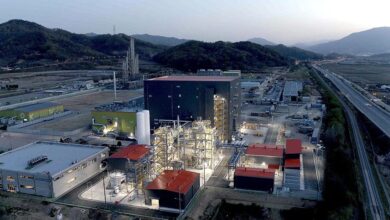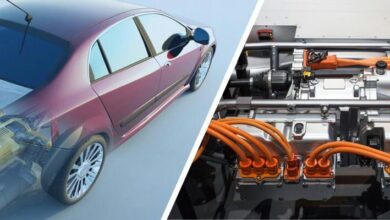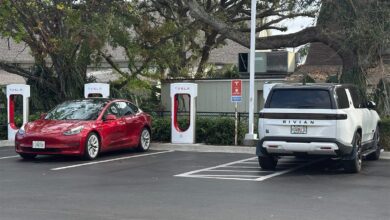Charged EVs | Zeta Energy makes a breakthrough in lithium-sulfur battery technology
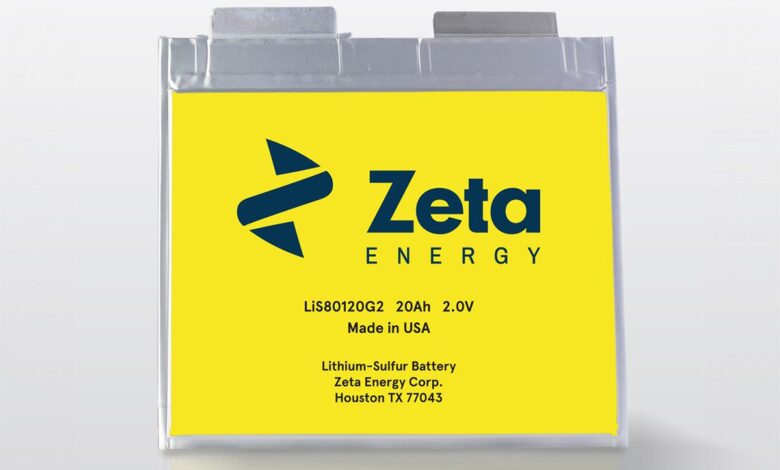
Cheap, abundant and sustainable.
Sulfur may not be the most glamorous of elements—some may associate it with rotten eggs, stinky well water, or even the devil, as invoked in a country preacher’s fire-and-brimstone sermon. But as a component of an EV battery cathode, sulfur has a lot to offer. The yellow stuff is lighter and less expensive than the cobalt, nickel or iron typically found in today’s cathodes, and lithium-sulfur batteries could deliver superior performance.
Zeta Energy, which was founded in 2019, says it has created “the world’s first and only successful lithium-sulfur battery.” Zeta’s sulfur-based cathodes are inexpensive, and use no cobalt, graphite, nickel or manganese. Sulfur, a by-product of oil refining, is cheap and readily available worldwide, and it has a modest carbon footprint. The company has also developed a novel anode which it says boasts higher capacity than other current anode technologies, and is free of the pesky dendrites that have inhibited development of lithium metal batteries.
Zeta’s battery uses metallic lithium instead of intercalating lithium ions, which enables much higher energy density. The company has measured specific energy of 450 Wh/kg—almost double that of today’s best lithium-ion batteries—and a charge rate of up to 10C.
Charged spoke with Chief Science Officer Rodrigo Salvatierra.
Charged: What stage are you at with the battery in testing right now? Have you got some cells with potential customers?
Rodrigo Salvatierra: Our main exposure to the market is through a recent joint development agreement with Stellantis. The purpose of that agreement is to make lithium-sulfur batteries that can outperform today’s lithium-ion batteries. We are at the stage where the attributes of the cell are being tested in real EV environment testing conditions.
There are many ways to test EV batteries. When you have—let’s say—a flashlight, you have a constant discharge current. When you have a car, you have constant pulses of charge and discharge: for example, when you press the brake or when you accelerate. When you are driving, you have a profile of driving, and how that profile impacts the cycle life, how lithium-sulfur cells perform under those conditions, that was not well known.
We’ve also sent samples to other OEMs. They are interested in other aspects that maybe Stellantis is not really that interested in. We have other programs to develop batteries for low-temperature applications, which is something that sulfur is notoriously bad at. We also have interest in fast charging, which lithium-sulfur is known to be good at. There are other customers interested in buying cells from us, to see if they can fit into their own internal testing conditions.
The testing we’re doing now speaks directly to the performance of the electrodes. The other part, which is more engineering, involves making cells in the size required to be used in a module or a battery pack.
Charged: Stellantis is hoping to have lithium-sulfur batteries in a vehicle by 2030. Are you just testing the cells at this point, or are you already putting the cells together in a battery pack and testing it in a prototype situation?
Rodrigo Salvatierra: The testing we’re doing now speaks directly to the performance of the electrodes. The other part, which is more engineering, involves making cells in the size required to be used in a module or a battery pack. And a related question is: Can we execute production of really large amounts of those cells so we can fit not only one car, but many of them? Can we scale up the materials?
Remember that the lithium-sulfur battery involves two streams of materials that are completely different from those used in the lithium-ion battery. The lithium-ion battery has materials for the anode, materials for the cathode, and you have a lot of options for both. Lithium-sulfur, not so much.
We still have to define where we get the sulfur. If you are a manufacturer of cathode materials for lithium-ion batteries, you go to a big company that sells metal oxides, and they will have a battery-grade cobalt and an industrial-grade cobalt. You can’t find a battery-grade sulfur today—there’s no such thing. Of course, we can use sulfur from chemical grades—we can make cells, we can test our cells. But can we make bigger cells? Are our processes for making the cathodes and the anodes compatible with the same machines that the lithium-ion battery uses today? Or do we need special machines to make lithium-sulfur batteries? That part, I think we have answered. Yes, we can use the same machines that assemble the lithium-ion battery today. We can use those in our production.
However, the materials needed for lithium-sulfur batteries are extremely different. We have to make our own anode and our own cathode, so we are actually tackling three problems. We have to make really good, high-performance cells, but we also have to have a lot of cathode materials and anode materials. The first one, the testing, I think is going well. If we didn’t have good performance from our cells, we would not have been able to make a deal with Stellantis on developing a cell for an EV together. But now, we are also working on the engineering side, how to make more of those materials that will go into the cells.
We’re manipulating billions of carbon nanotubes at the same time, controlling the spaces between them precisely, and growing them uniformly on the surface of a metal foil.
Charged: So, as you’re testing the cells themselves, at the same time you have to figure out how to get the supply chain rolling.
Rodrigo Salvatierra: That’s correct. We have to align ourselves with suppliers of materials. The good thing about lithium-sulfur is that we don’t have to create a new supply chain, we just have to essentially adapt an existing supplier. Sulfur is a byproduct of oil refining. So, we have to find a way to qualify that sulfur and obtain it to make our materials.
Charged: Sulfur is used in the cathode, but you’ve made some innovations with the anodes also. Lithiated, vertically-aligned carbon nanotubes—is this something that you developed?
Rodrigo Salvatierra: No, carbon nanotube (CNT) technology has existed for maybe 30 years. But making carbon nanotubes the way we make them is a very particular process to Zeta. We can grow this really nice carpet with good control of all the spacing—we’re manipulating billions of carbon nanotubes at the same time, controlling the spaces between them precisely, and growing them uniformly on the surface of a metal foil. This is a technology that we developed. Carbon nanotubes are common, but we developed a way to create the carbon nanotubes in a carpet with very good control so they can be relevant for the applications they are intended for, which is as a host for metallic lithium anodes.
The CNT itself, it’s not the active anode material. The active material for the lithium-sulfur battery is metallic lithium. But metallic lithium alone creates a lot of problems, which are well known. These are normally described as dendrites, but this is a term that means a lot of things to different people—let’s just say it’s a structure that is undesirable. And one way to remove those undesirable structures from the metallic lithium is to use our strategy of hosting that metallic lithium—instead of having a flat foil of metallic lithium, we distribute it over billions of these carbon nanotubes. It’s like if you have this carbon nanotube growing as a vertical pillar, you are distributing the lithium metal on the sidewalls. They’re growing conformally around those carbon nanotubes.
How to do that is not trivial. It involves a lot of knowledge about how the current distribution happens in these materials. That’s actually our intellectual property, how to do that. By distributing the metallic lithium inside these carpets, that’s how we prevent the formation of the dendrites.
Metallic lithium alone creates a lot of problems involving dendrites. One way to remove those undesirable structures is to distribute the metallic lithium over billions of carbon nanotubes. That’s our intellectual property, and that’s how we prevent the formation of dendrites.
Charged: You have a novel anode and a novel cathode. Are those two things that necessarily work together? Could you have your sulfur cathode with a different kind of anode?
Rodrigo Salvatierra: Good question. The sulfur cathode we developed is also a special type. It’s not based on elemental sulfur—it’s based on something we call sulfurized carbon. It’s a very particular component of the cathode that is responsible for bonding to the active material, which is sulfur.
The sulfurized carbon cathode can be paired with different anodes. You can combine it with traditional anodes, or you can take the metallic lithium anode, with our CNT technology, and pair it with typical cathodes. It seems simple to do that, but it’s more challenging than it sounds.
When we develop our system, we have to consider the main player, which is the electrolyte. Our system is designed to be used with liquid electrolytes like a lithium-ion battery, but for our battery to operate with our anode and our cathode, we have to have our own recipe of liquid electrolyte. That liquid electrolyte may not be compatible with a traditional cathode like an NMC, and may not be the best for a traditional anode—you would have to develop electrolyte formulations that are specific to that type of chemistry.
Of course, it’s not going to be like starting over on the electrolyte development. One of the research projects we have ongoing with another OEM that we cannot reveal at the moment is to develop cells using our sulfurized carbon cathode with other anodes.
The good thing about using liquid electrolytes is that we can use most of the separator types that the lithium-ion battery industry uses.
Charged: It sounds like all the pieces of the recipe have to work together. Cathode, anode, electrolyte…separators?
Rodrigo Salvatierra:
The good thing about using liquid electrolytes is that we can use most of the separator types that the lithium-ion battery industry uses. We don’t have to have a special electrolyte separator.
Charged: And you can make your cells using existing battery manufacturing equipment?
Rodrigo Salvatierra: We can use almost all the current lithium-ion battery assembly equipment because of the nature of our electrodes. What is different about Zeta’s technology is the way we lead to those electrodes. Anodes and cathodes for the lithium-ion battery come in rolls of foil. Those foils are introduced into machines that calender them, cut them, sort them, pick them, and put them into cells. We can produce the same type of rolls.
From the raw materials to the electrode level, we are different, but from cell to pack level it’s the same. Right now, for example, in our prototype facility, we use the same methods that we would use to make other types of chemistries.
We can use almost all the current lithium-ion battery assembly equipment because of the nature of our electrodes.
Charged: Do you have any competitors in this space? Is anybody else getting close to a good sulfur-based cathode?
Rodrigo Salvatierra:
The field is rich today in terms of competition, which I think is good. I think in the US, the biggest one is Lyten. Lyten uses their own graphene technology to host sulfur, and I think also to host metallic lithium. In terms of manufacturing, also, they’re producing power cells with competitive energy density.
Charged: What specifically is going on in your labs right now? Can you describe the steps of the testing process?
Rodrigo Salvatierra: In our lab, we have processes for making everything. We synthesize the cathode from raw materials. We synthesize the anode’s base structure from raw gases. We have some carbon feedstock. We can make the cells as well. And we are very focused on the material side, because we understand that to make a lot of batteries of commercial relevance, we need a pilot plant. Right now we are qualifying all the steps in terms of materials, electrodes, coatings, assembly, so we can create a strong baseline to go to the next step, which is a pilot plant.
We completed a Series A funding round in 2023 and now we are raising funds for our pilot facility. The pilot facility will have an automated assembly line. There will be larger machines to make more of the cathodes, not much variation in the type of the cathode. We’re going to freeze one recipe of cathodes, one recipe of anodes. And the pilot will be more focused on the engineering side to facilitate production.
It’s notorious that, when you have pilots at the beginning of your production, you will have a very large scrap rate because you’re still adapting your processes. And sometimes, in other companies that scale up battery technologies, they take some time until they significantly reduce the scrap rate so they can start producing. We know that the market is moving quite fast, so we cannot allow ourselves to have a lot of delays. We have a lot of discussions with experts in other companies that have experience in scaling up production, so we know what we should pay attention to. We don’t want to wait until we get bigger machines consuming hundreds of square meters per day and we have to change one thing or another. We have to do that now.
Historically, they’re not very good at cold-weather performance, but we developed electrolytes and sulfur cathodes that are excellent. They actually out-perform lithium-ion batteries.
For example, when you buy the big machines, there’s always a learning curve, and that can take months or years. We are partnering with the people that have those machines, and we are already learning what works and what doesn’t work before we move to the next step, because we know that there is a rush to produce faster, to get our cells to market faster.
Charged: You said earlier that there are certain applications for which sulfur batteries aren’t very suitable.
Rodrigo Salvatierra: Historically, they’re not very good at cold-weather performance, but we developed electrolytes and sulfur cathodes that are excellent. They actually out-perform lithium-ion batteries. That’s because of the specific type of material we use for the cathodes.
One of the things that maybe sulfur is not good at is voltage. The voltage of the lithium-sulfur battery is half that of the lithium-ion battery. It’s lighter, but the voltage is also lower. So, for example, for applications such as cellphones, you might need two batteries in series to reach the required voltage.
Every type of cell has good attributes and bad attributes. There’s not a single chemistry that checks all the boxes, including lithium-ion. Lithium-sulfur has its strong attributes, but also has others that are not so good. From my personal point of view, I like the sustainability aspect—sustainable in the sense that there’s so much sulfur available.
Charged: Tell us more about the sources of sulfur supply.
Rodrigo Salvatierra: I’m not going to mention any political orientation, but one interesting aspect about sulfur technology is its connection to oil. Oil is a non-sustainable energy source, and batteries are considered to be the sustainable choice. Sulfur batteries give you the only opportunity for making oil part of the sustainable circular economy.
How? The main source of sulfur—above 90%—comes from refining oil. Every 10 times you refill your car with gasoline, you probably consume the amount of crude oil that you would have to refine to generate enough sulfur to make one battery pack for a car.
That sulfur battery has no metals, so it requires much less transportation of materials. Metals for batteries like cobalt, nickel, manganese, are not geographically well-distributed. They are produced in one place, they have to travel to another place and then be distributed. That creates a lot of cost. Sulfur, on the other hand, is local. Every country that can extract or refine oil will produce sulfur.
So, you can make batteries locally—that’s the first point. The second is bringing oil into the circular economy—no one has ever actually proposed that. In the 1980s, there was this thing called acid rain, and this occurred because you didn’t remove the sulfur from your oil. The US has maybe the most advanced technology to desulfurize oil. But where do you think that sulfur goes? That sulfur goes back to the well that you got the oil from.
The main source of sulfur comes from refining oil. Every country that can extract or refine oil will produce sulfur. Sulfur batteries give you the only opportunity for making oil part of the sustainable circular economy.
Charged: Is there any significant market for that byproduct?
Rodrigo Salvatierra: There is a huge market for sulfur, but there’s such a large amount of sulfur that you don’t ever have problems with price oscillation. Just to give an example: Batteries historically use cobalt, but there’s a lot of pressure to reduce the amount of cobalt because cobalt comes from the Republic of Congo, [which has environmental and child-labor issues]. So, we opt for nickel-rich cathodes. Nickel is more available, but nickel is in demand by the steel industry and other industries. One of the major producers of nickel in the world is Russia. When Russia entered the war with Ukraine, there was a huge spike in the spot price of nickel.
The prices of nickel, cobalt and all those metals are above $20 per kilogram. The price of sulfur remains under 60 cents per kilogram. It’s two orders of magnitude cheaper.
Today, no one cares about sulfur. Sulfur goes to the fertilizer industry, goes to sulfuric acid for the chemical industry. But those industries don’t care if you introduce another huge stream of demand, because there is so much sulfur on the planet. There’s a pyramid of sulfur in Alberta that’s wider than the Giza pyramids in Egypt. Some of my colleagues made a calculation: If you replace all the batteries on the planet with sulfur, you would use maybe half of this pyramid.
This article first appeared in Issue 72: April-June 2025 – Subscribe now.
